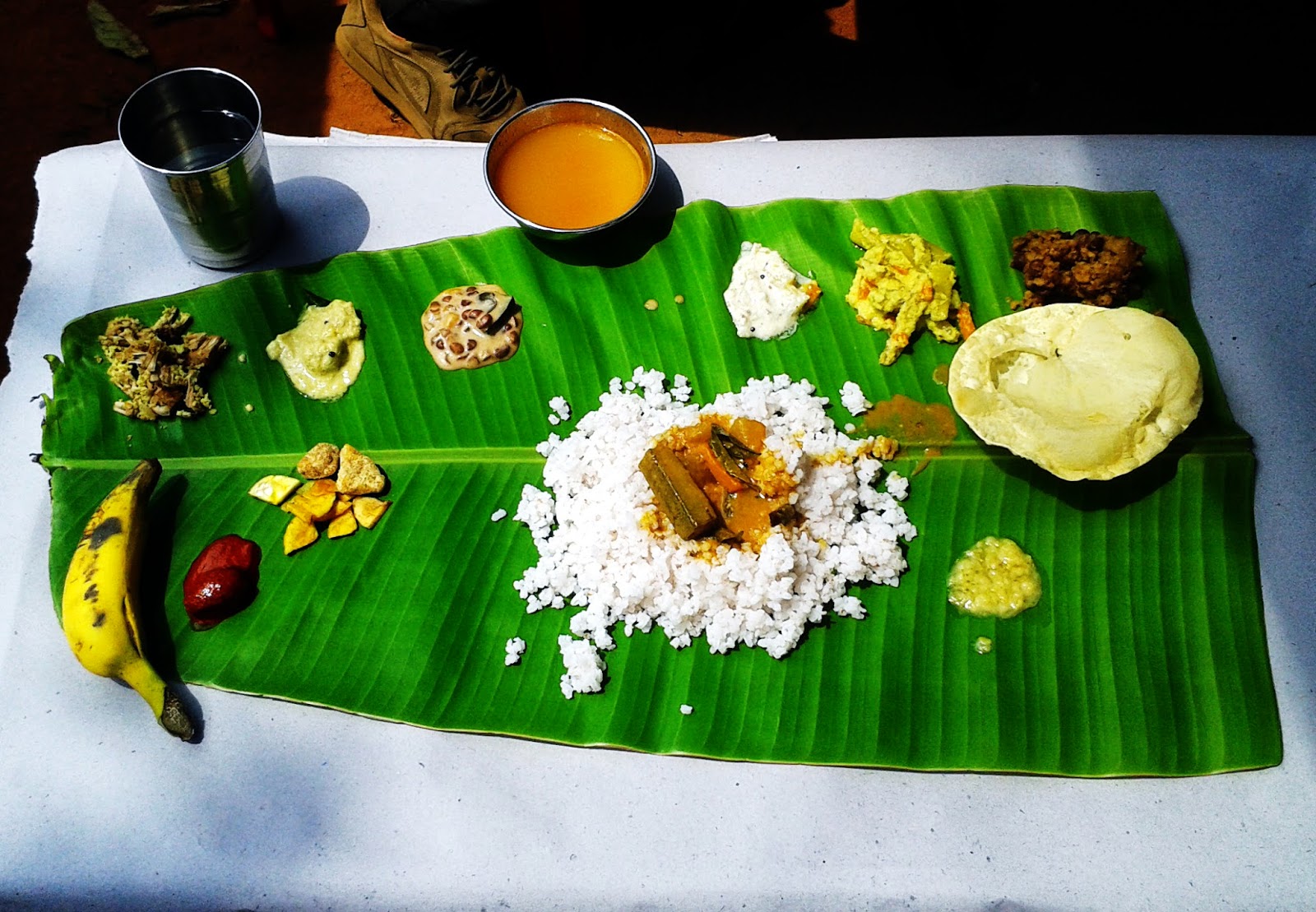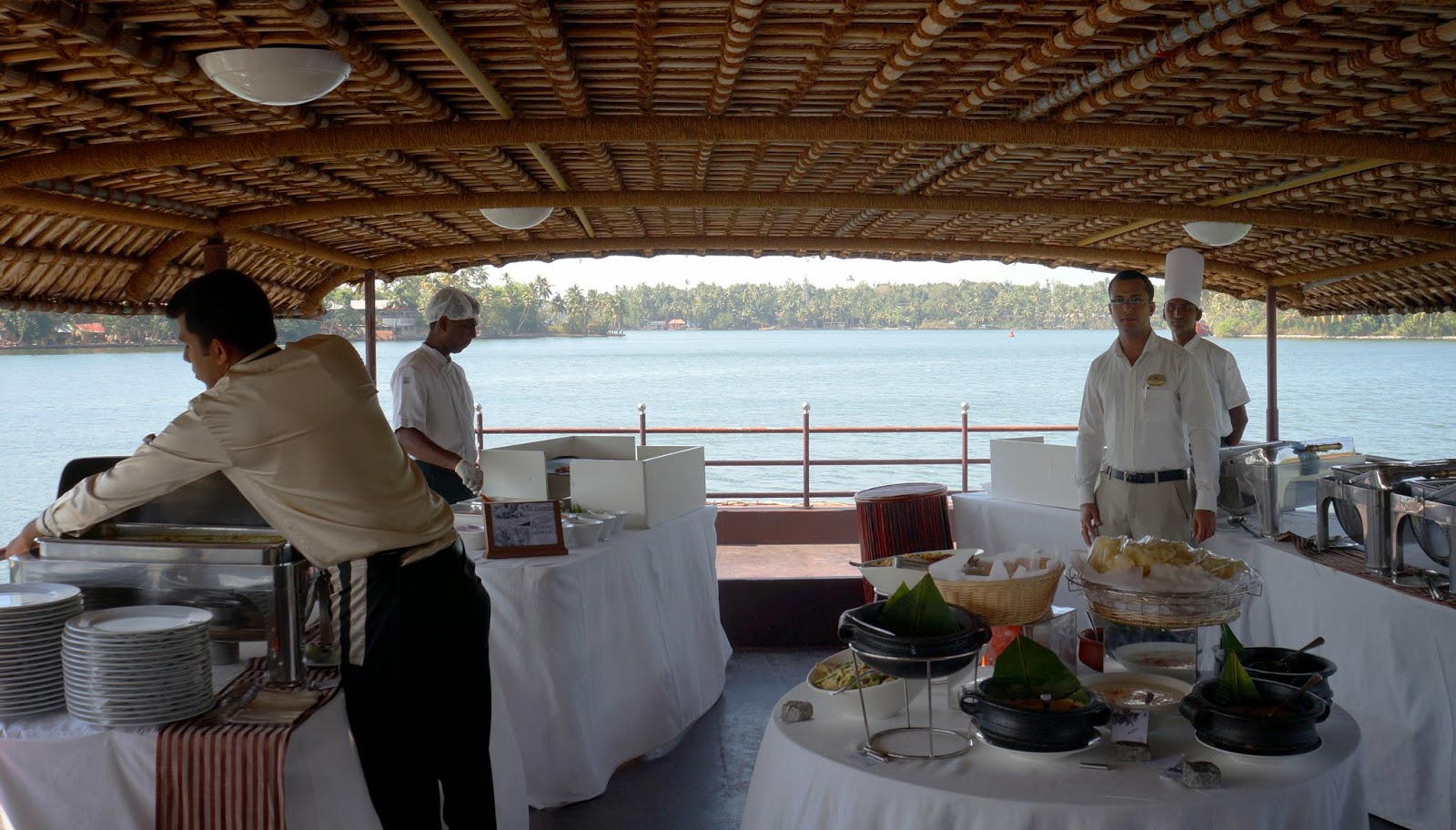First of all, I have to admit I know nothing about food. I like to eat and some things I like, some I don't, but that's pretty much it. Usually when I travel I like to it in places where locals do (including places avoided by "normal" tourists who look at them with horror in their eyes), I like trying street food as well. Once in Peru we got to a restaurant that was just a few tables in a backyard. I'm not even sure how we found it or figured out that it was a restaurant - there was no sign or menu. Fat old Peruvian lady looked at us slightly surprised - we weren't her typical target I guess - and without asking for our preferences she served us delicious dinner and glass full of chicha.
 |
| In Kerala every bar is cool:) |
I didn't experience anything like that in Kerala. As we were fed mostly in high-end hotels the food was very sophisticated but at the same time standardized and - somehow - adjusted to our needs, especially when it comes to the level of spiciness. So no, I did not share a plate with local people and I did not drink anything that was spitted out and fermented before, but I got to try things I would probably never tried otherwise. And as most of places served the food buffet style I could try a little bit of everything, including fish curry, briyani, my favorite paneer and payasum for desert (which I didn't like that much so I ate lots of watermelon and coconut souffle instead).
Problem is that as I didn't order the food from the menu, I didn't pay attention to what are the names of dishes. I could of course spend a few hours in Google now and write a nice, informative essay on Kerala cuisine but I prefer to recommend you someone who knows more about it than I do. In our group there were a few food bloggers: there was Nelson I already told you about, there was Elsie from Mexico, who looked for Mexican roots in every dish, and there was Roxanne, who not only writes great about the food but also sings the greatest 80s hits and her fake American accent (with matching fake personality) made us laugh out loud.
 |
| Roxanne in the middle, and from the left, next to me is Taufan Gio (http://disgiovery.com/), Justin and Meruschka (http://www.mzansigirl.com/) |
It's not that I want the others to do all the writing, I will add a few words too. The word Kerala can be translated as "The land of a coconut". And you can see (or taste) it everywhere. Coconut is added to everything, I guess everyone has a cookbook "1000 things to do with a coconut"". Coconut oil is used for frying, coconut milk is an ingredient of pretty much every dish, we were welcomed with fresh coconut in many hotels - I loved it, on a hot day it's wonderfully refreshing.
Couple times we got to eat a delicious coconut flesh. I also tried picled coconut - it reminded me of walnuts, and for desert we were often served delicate coconut souffle. We also had an opportunity to try toddy, traditional alcohol made of a coconut. It was... different, not coconutty at all, smoked I would say. Interesting experience, almost like Peruvian chicha:)
Couple times we got to eat a delicious coconut flesh. I also tried picled coconut - it reminded me of walnuts, and for desert we were often served delicate coconut souffle. We also had an opportunity to try toddy, traditional alcohol made of a coconut. It was... different, not coconutty at all, smoked I would say. Interesting experience, almost like Peruvian chicha:)
In Poland I stay away from coconut, especially that it's used mostly as grated coconut which tastes nothing like a real thing. In Kerala I fell in love with coconut (it's an old flame actually, our first time was in Dominican Republic). And I have to admit, the coconut itself could be a good enough reason for me to move somewhere south.
We got to see Kerala cuisine in making. We were invited to cookery demonstration by Nimmi Paul. She's been cooking professionally for 20 years and she gives classes and demonstrations in her beautiful house in Kochi. What she cooked for us was quite simple and not spicy at all which surprised me a little, but it was a nice change from all the hotel food - no matter how good it is, even the best curry after a while is just too much. Before I got to Kerala I never thought you can get tired of Indian food. Yes you can. After a week of rice and curry for breakfast, lunch and dinner every single day I had to stop. Luckily it took me couple days (of eating mostly watermelon, which also was everywhere but I didn't get tired of it) and I could go back to enjoying Kerala cuisine.
 |
Nimmi Paul
|
We also got a chance to eat traditional Kerala dish called Sadya: it's served on banana leaf and the ingridients, of which if you belief in Wikipedia can be as many as 64, are placed on the leaf in special order. Sadya is eaten with right hand without using cutlery. It was not that easy to eat it and not get it all over my face or t-shirt but I managed. And it was delicious too.
 |
Sadya
|
Sadya is vegetarian but there is meat in India too, including - which was the biggest surprise for me - beef. I always thought there was no beef whatsoever in India, meanwhile beef curry was quite popular dish on the buffet, and in the last hotel we stayed in - Ramada Resort Cochin, I had a really great steak. I heard that beef is quite popular here in the south. However it's not cows that are eaten but bulls.
I did miss the experience of eating out, even though we got to taste more than just a standard hotel set of dishes. For example in one of my favourite hotels, Coconut (nomen omen) Lagoon, the manager told us he's trying to expend the menu besides what the hotels usually serve and introduce the dishes eaten by normal people at home.
Other than short stops of our bus in strange, cheap roadside diners (when we were really desperate to pee and there was nowhere else to stop) there was I think just one other time I could breath "real" India for a moment. When we were in Calicut we had an hour or two before dinner and I went for a walk on the beach with Justin. He is another person from the group, after Shawn, Nelson and Daniel I made friends with. We had some good talks over those couple weeks.
 |
Justin and coconut
|
Justin traveled a lot, recently he spent some time in Central America, and now he's back to California. He writes a blog Justin Was Here, and is a founder and editor in chief of World Travel Buzz. We had a nice talk about this and that and in a tiny shop with sticky tables and crappy customer service we had chai, sweet, aromatic milk tea that smells of cardamom and some other spices. And I have to say that there is no hotel, even the most fancy one, where tea would taste like there on the beach, scalding my fingers through plastic cup…
















































